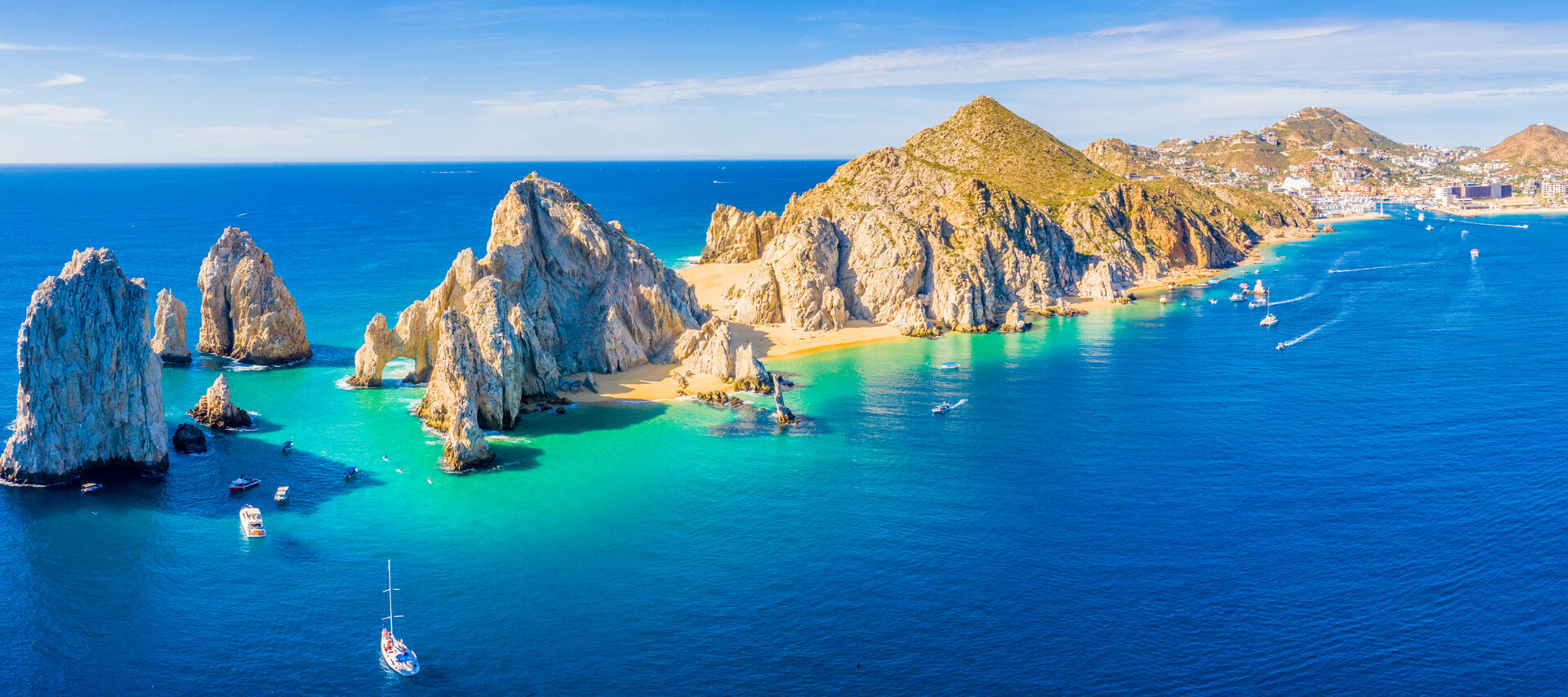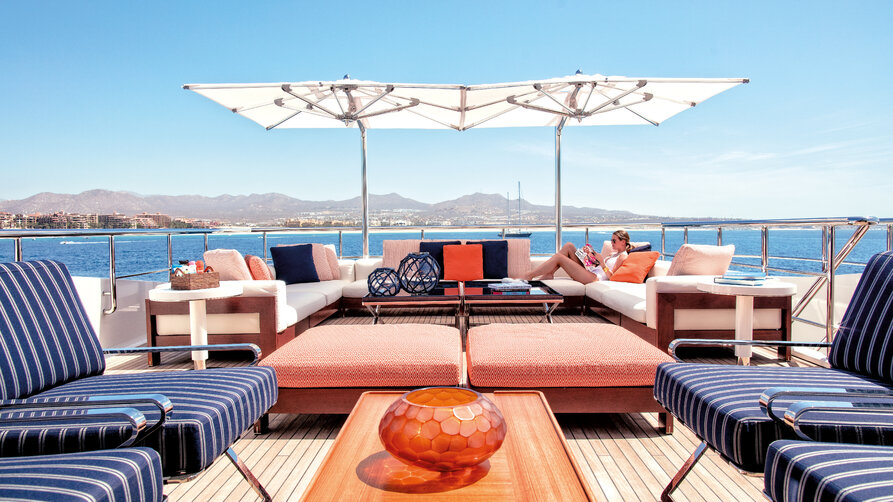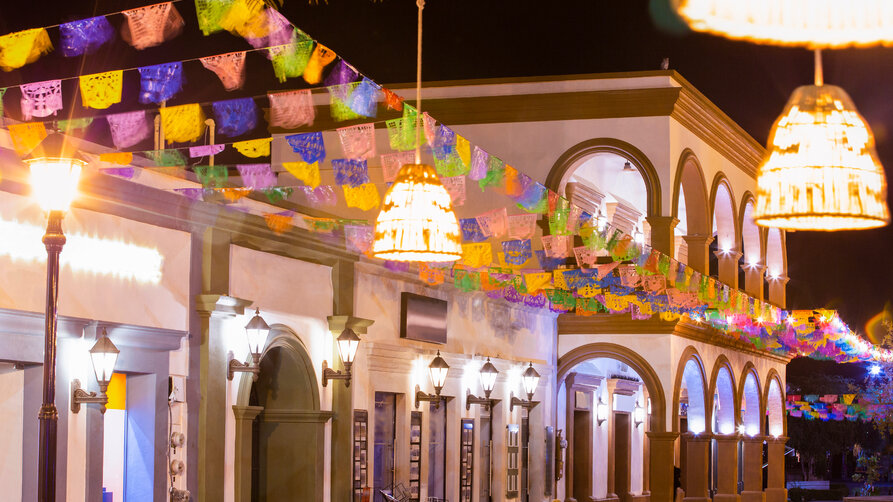Yacht Charter in Sea of Cortez
Best time to visit
December - April
Languages
Spanish, English
Currency
Mexican Peso, US Dollar
Chartering in Sea of Cortez
For spectacular diving year-round and some of the best marine life on the planet, the Sea of Cortez, sometimes called the Gulf of California, is a must-visit destination on your Mexico yacht charter. The Sea of Cortez is a narrow, largely sheltered sea, which separates the Baja California peninsula from the Mexico mainland. With an ecosystem supporting over 2,900 species of fish and mammals, on a Sea of Cortez yacht charter, you can discover why Jacques Cousteau famously labelled the watery Arcadia, ‘the world’s aquarium’ and why John Steinbeck felt compelled to write a journal of his leisurely expedition here in 1940. Indeed, it’s considered such a natural laboratory in terms of speciation that it has earned UNSESCO World Heritage status.
Dive with blue whales, sharks, barracuda, wahoo and marlin in the naturally abundant turquoise waters, or moor up to discover desert landscapes, and to explore over 240 islands and islets, which are home to high rocky cliffs, deserted white sandy beaches, beach clubs, nightclubs, golf courses and Michelin star restaurants.
From its ancient Mayan and Aztec roots to its contemporary revival as a centre for arts and sciences, Mexico is one of Latin America’s most beautiful and culturally rich countries and this is its most underrated cruising ground. Discover the wonders that await with a Mexico yacht charter.
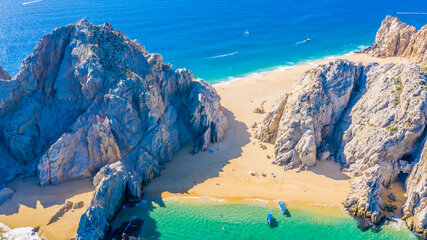
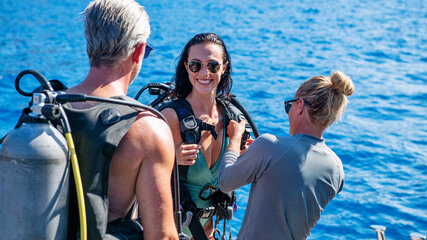
Best places to eat, drink and party in Sea of Cortez
For most people, the party beaches, luxe resorts and upscale clubs of Cabo San Lucas is the place to be. Book tickets for the Las Vegas-style shows at Coco Bongo Los Cabos or hire a private cabana for that toes-in-the-sand feeling at Cachet Beach Club.
For something a little more rustic, be bowled over by the English garden charm of Flora Farms, where you can enjoy a field-to-table dining experience, with dishes cultivated using organic ingredients grown right here on the farm and meat provided by the nearby ranch.
And for out-and-out luxury, anchor off Palmilla and take the tender across to our partner’s One&Only hotel. This resort offers the kind of peerless service that you are used to receiving on a yacht and has four incredible restaurants as well as oceanfront infinity pools.
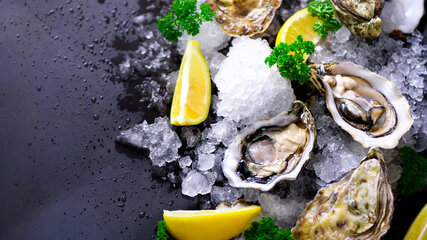
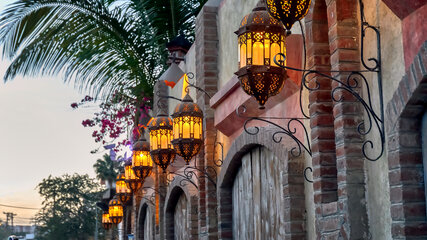
Best things to do in Sea of Cortez
There’s no doubt about it, the Sea of Cortez is one of the best places in the world for a sea safari. Go diving or snorkelling and see if you can spot the big five: mahi-mahi, manta ray, shark, marlin and sailfish, or cruise to Cabo Pulmo, a huge Marine Protected Area, where you can see whales – both blues and humpbacks – sharks, even jumping manta rays.
Meanwhile, at Los Islotes, a rocky island north of La Paz, you can see hundreds of sea lions – on a Sea of Cortez yacht charter you can have close encounters with all manner of marine life, which is why many people refer to it as the ‘Galapagos of North America’.
On land, take a dune buggy from desert to ocean in Cabos San Lucas, hop in a helicopter and go wine-tasting in the Guadalupe Valley or visit Isla San José, where you can walk amid forests of giant cacti and see relics from its abandoned salt-mining industry.
Cabo Pulmo
Pulmo, a Latin root for lung, refers to the breath-holding of the pearl divers who originally colonised the island. You can enjoy year-round diving at this national marine park, which encompasses 17 dive sites including an underwater canyon, where visibility can reach 100ft. You can swim here all year, though in winter you’ll more than likely be joined by humpback whales and whale sharks. Fishermen replaced the pearl divers, who fished the reef and local area heavily until they gave up their nets to protect Cabo Pulmo, leaving the only hard coral reef in the Gulf of California. The reef, nicknamed ‘’The Aquarium of the World’’, has over 800 species of marine life and is considered a treasure of Mexico's Baja California Peninsula.
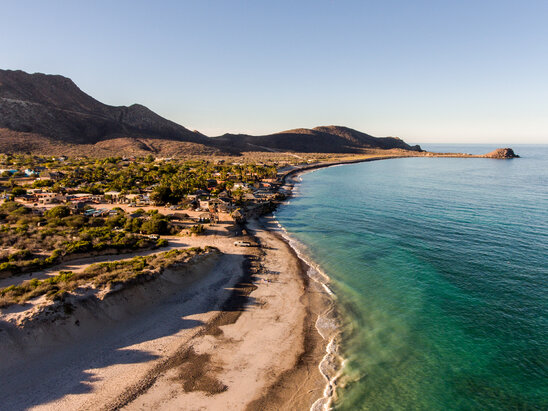
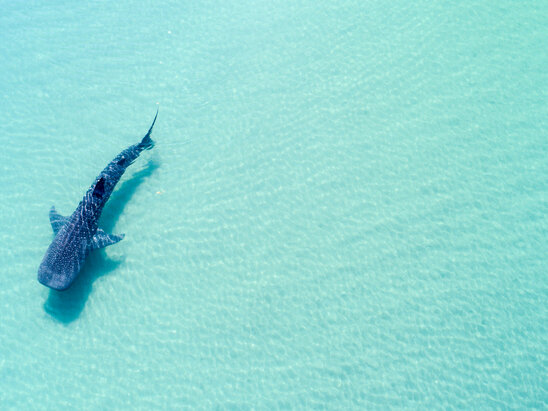
Cabo San Lucas
For fun, sun and all the amenities you could ask for, this resort town is where you’ll want to be. There are excellent golf courses to enjoy, chic beach bars, incredible Pacific Ocean views and some of the best sportfishing spots. Cabo San Lucas has become the ultimate fishing tournament destination and is considered the Striped Marlin capital of the world. The most southern point of Mexico’s Baja California peninsula, famous for the Cabo San Lucas stone arch at Land’s End, bounded by the Sea of Cortés and the Pacific Ocean. Back towards the harbour, seafood restaurants and shops line the marinas promenade, whilst a strip of cocktail bars and clubs snakes inland from the waterfront.
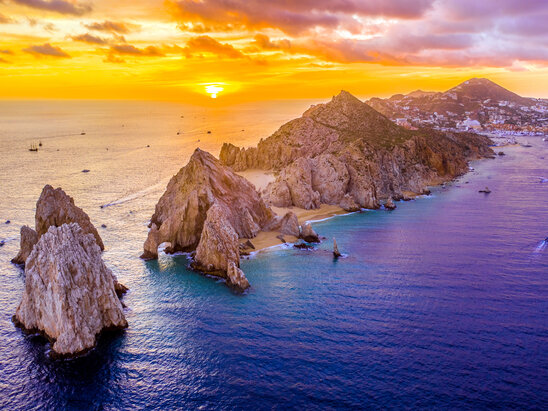
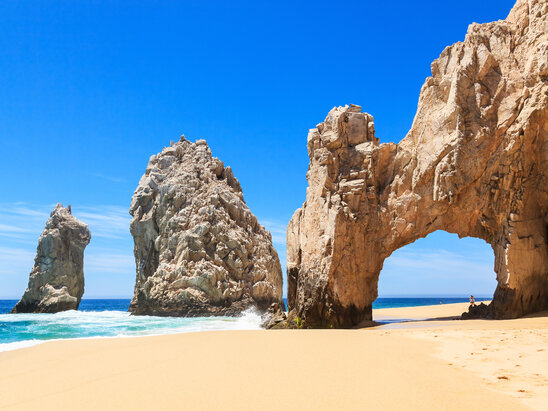
Isla Espiritu Santo & Isla Partida
For beautiful beaches in southern Baja and the chance to see playful sea lion pups, this is the region to come. Isla Espiritu Santo & Isla Partida are separated by a narrow shallow channel and the largest colony of seals can usually be found at Los Islotes, just north of the isles. If you like, you can dive in from the swim platform for an even closer encounter. There is a cove on the west side of Los Islotes, with the famous rock formation ‘La Mascara’ where a haunting image of a face stares out into the blue. The rock walls reveal the secrets of its birth, with the ancient volcanic ash and lava creating a geologic rainbow of pink, brown and beige rows.
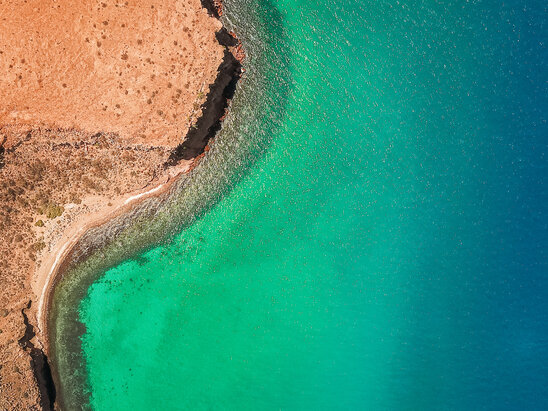
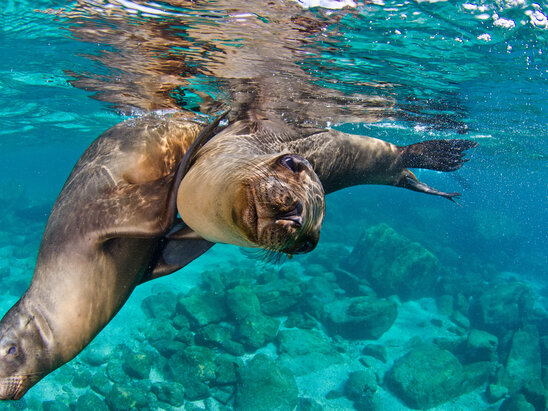
Isla San Francisquito
A little south of Isla San José, is another small island, once the domain of gold miners and pearl prospectors, which today is deserted aside from a diverse range of reptiles and birds. You can follow one of the hiking trails through the island or just kick-back on one of the pearly-white beaches. This uninhabited island is located in the southern portion of the Gulf of California, and is home to ten species of reptiles including the endemic Isla San Francisco whiptail. If you fancy a dive, there is a fantastic reef with excellent visibility where there are plenty of great opportunities for marine photography. The island has a wide bay, with a beach that wraps all the way round.
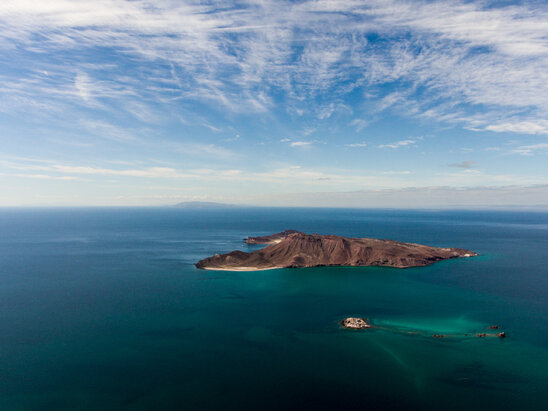
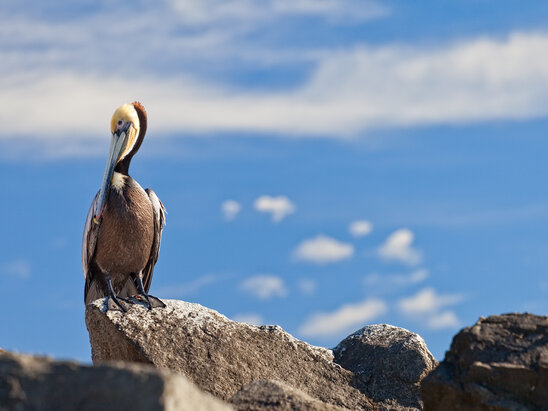
Isla San Jose
The small island of San José is surely one of Mexico’s prettiest. The coloured cliffs that frame the island, tower above the bluest waters, and though much of the island is arid, drop anchor in Bahia Amortajada on the south of the isle and you’ll enter a world of mangroves teeming with pelicans, herons and other exotic birds. On the island you can find an old private airstrip, a small fishing village, and an abandoned salt mine with old buildings and equipment located at Pointe Salina. Isla San Jose is also a great place for kayaking where you can explore the vibrant green mangrove forests and sandy spits, with wonderful creatures occupying the algal-covered rocks and rocky coral below.
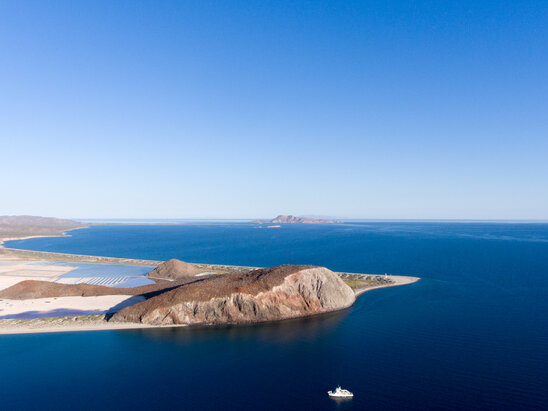
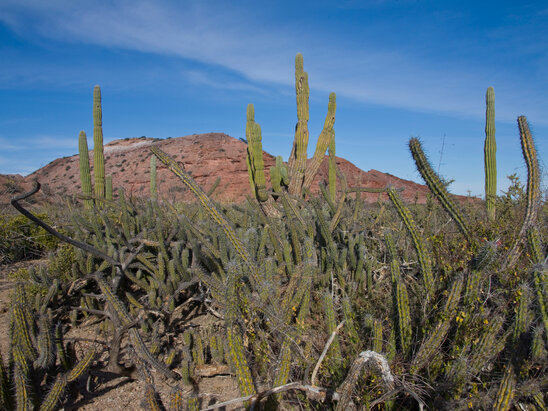
La Paz
Baja California’s capital still bears evidence of her Neolithic settlers in the rock paintings that can be found in her surroundings, while in her centre, it’s brimming with bars, laid-back cafes and some surprisingly good restaurants. A colourful, lively city, it is nevertheless, only a short hop from some stunning beaches and exceptional dive sites. The Malecon (the 5 km stretch of the seafront) is lined with bars, restaurants and shops. A walkway down the whole stretch makes a lovely walk in the evening and is very popular with visitors. Outdoor activities such as sport-fishing take centre stage, with the opportunity to catch marlin, tuna, dorado and many more.
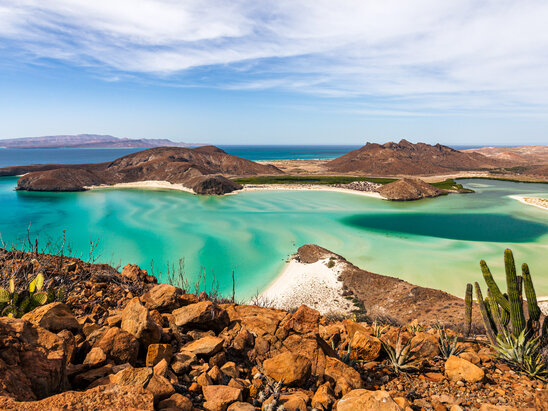
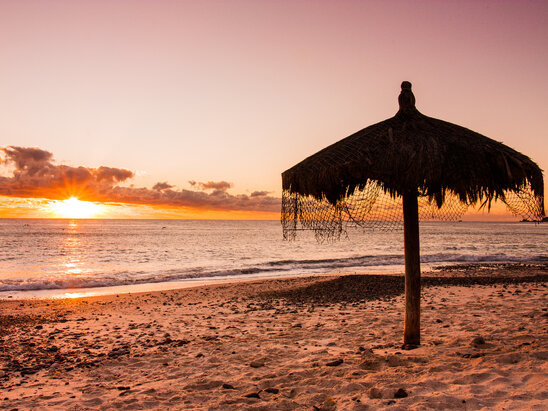
Loreto & the Parque Nacional Bahia de Loreto
Parque Nacional Bahia de Loreto lies off its coast and is remarkably home to 80% of Pacific Ocean marine life, and frequent blue whale sightings make it a popular place with sea kayakers. Isla del Carmen is the largest island in the nature reserve, with a huge mountain range that soars above the seascape and is a heavenly place to swim, hike, or simply beach-lounge The uninhabited islands of Santa Catalan and Monserrate, meanwhile, are great places to spot native birdlife, including vibrant parrots, and the clarity of the water make them both perfect for diving and snorkelling. This island is not visited as much as the other nearby cruising destinations, so you can often find a beautiful & deserted white sand beach to explore alone.
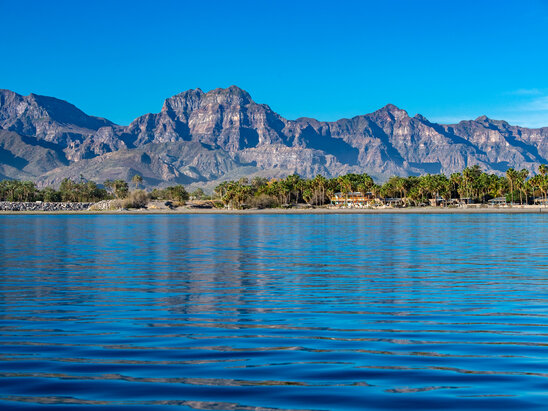
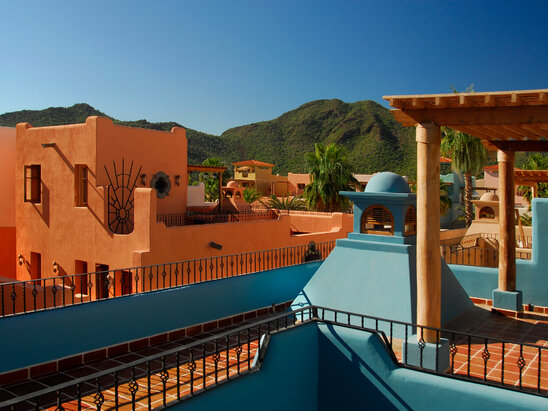
San Jose de Cabo
At the southern tip of the Baja California peninsula, this Sea of Cortez resort town is a little quieter and less in-your-face than nearby Cabo San Lucas and is undeniably pretty too, with palm-fringed lagoons, old colonial buildings and more than a little of the Old Baja about it. This is also where you will find the unparalleled One&Only Palmilla resort. This picture-postcard perfect city has a rich and colourful history, offering an abundance of Mexican charm and hospitality. San Jose del Cabo is best enjoyed on foot, with many art galleries showcasing both traditional and modern works from local artists. If you're seeking respite from the party-laden streets of Cabo, take a ride out to San José for a stroll around the lovely plaza.
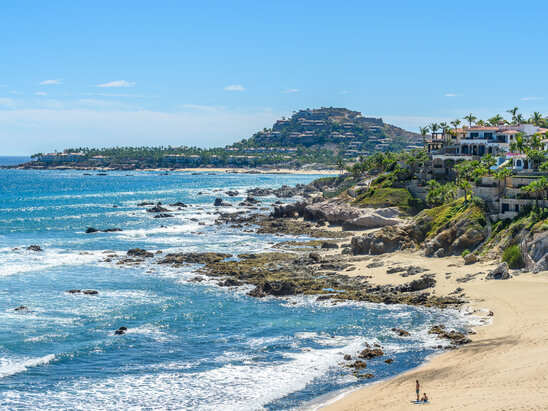
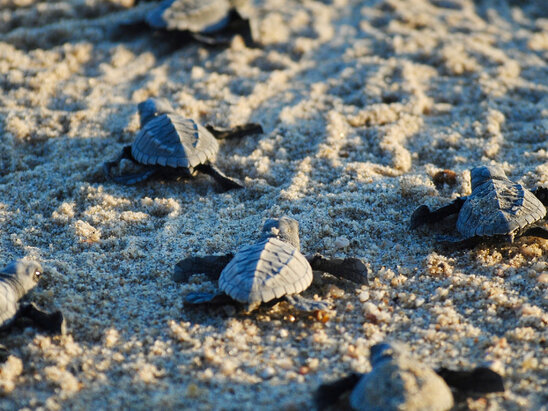
Best time to charter a yacht in Sea of Cortez
The main charter season in Baja and the Sea of Cortez is from December to April. Whales begin arriving in December and can be seen until around April (in fact at times it seems as though they never leave). The main whale mating season here is from January to March, making this the high season, although the sea will be cooler for you, and land temperatures range from 60°F- 80°F (16° C to 27° C).
Visiting just outside the main season, from April to June, is also enjoyable and will see far fewer crowds, plus the seas will be warmer and it will be hotter, averaging around 80°F-90°F (27 to 32° C).
What is the currency of the Sea of Cortez?
The official currency of Mexico is the Mexican Peso, which generally offers the best value for money. US Dollars are also widely accepted in the Baja region.
Language spoken in the Sea of Cortez
Spanish is the most common language in the Sea of Cortez, though English is spoken in many of the big resorts.
Time zone in the Sea of Cortez
The time zone in the Sea of Cortez is Mountain Time, which also adopts Daylight Saving Time from April to October. During this time, the Sea of Cortez is GMT-6 hours and outside Daylight-Saving Time (from late October to late March) it is GMT-7 hours.






